The New CVDK Grand Planetarium Eccentric, The Only Mechanical Planetarium Watch To Display All 8 Planets
To celebrate its 50th anniversary, CVDK unveils its most complex Planetarium watch to date.
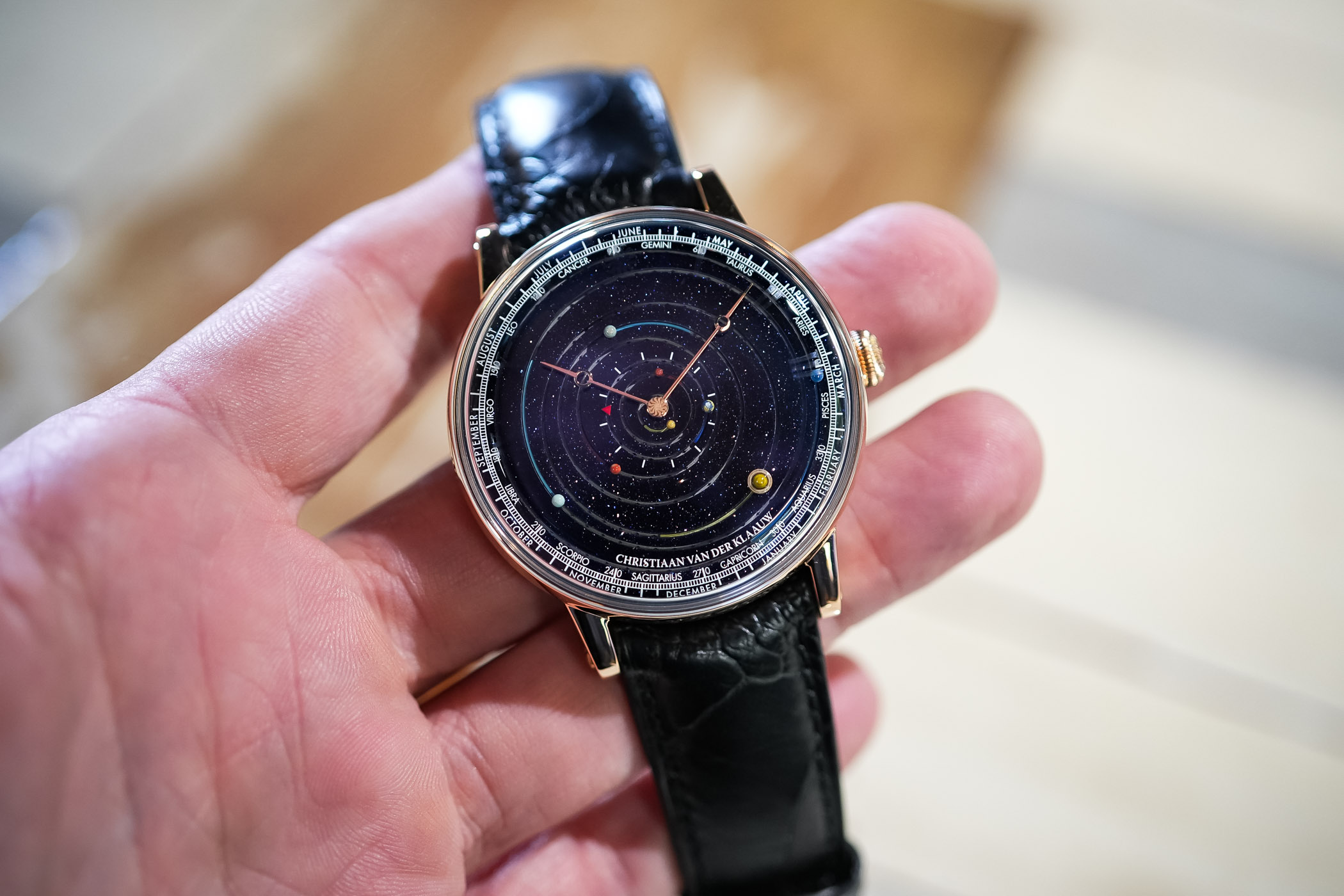
Christiaan van der Klaauw is one the most famous watchmakers in the Netherlands, and has gained fame for being possibly the best advocate of astronomical watches – in fact, this has even become the subtitle of the CVDK brand. Since 1974, this genius clock and watchmaker has produced some of the most beautiful and complicated astronomical masterpieces. And it’s, without a doubt, the planetarium complication that has made the man respected by its peers and collectors. This year, the CVDK brand is celebrating its 50th anniversary and will do it with nothing less than a new planetarium watch, the so-called Christiaan van der Klaauw Grand Planetarium Eccentric, the man’s most complex creation to date and the world’s only mechanical Planetarium watch that can display all 8 planets.

Mister Christiaan van der Klaauw, a member of the AHCI, has developed incredible astronomical complications over his career, including the most accurate 3D moon phase watch or watches that display tides. But in all fairness, nothing can beat the appeal and complexity of his planetarium watches – so much so that Van Cleef & Arpels asked him to develop watches for them. This rare and historical complication has become a signature watch for CVDK, and it was more than expected to see a new, improved version released for the man’s jubilee – since van der Klaauw started his career in 1974.
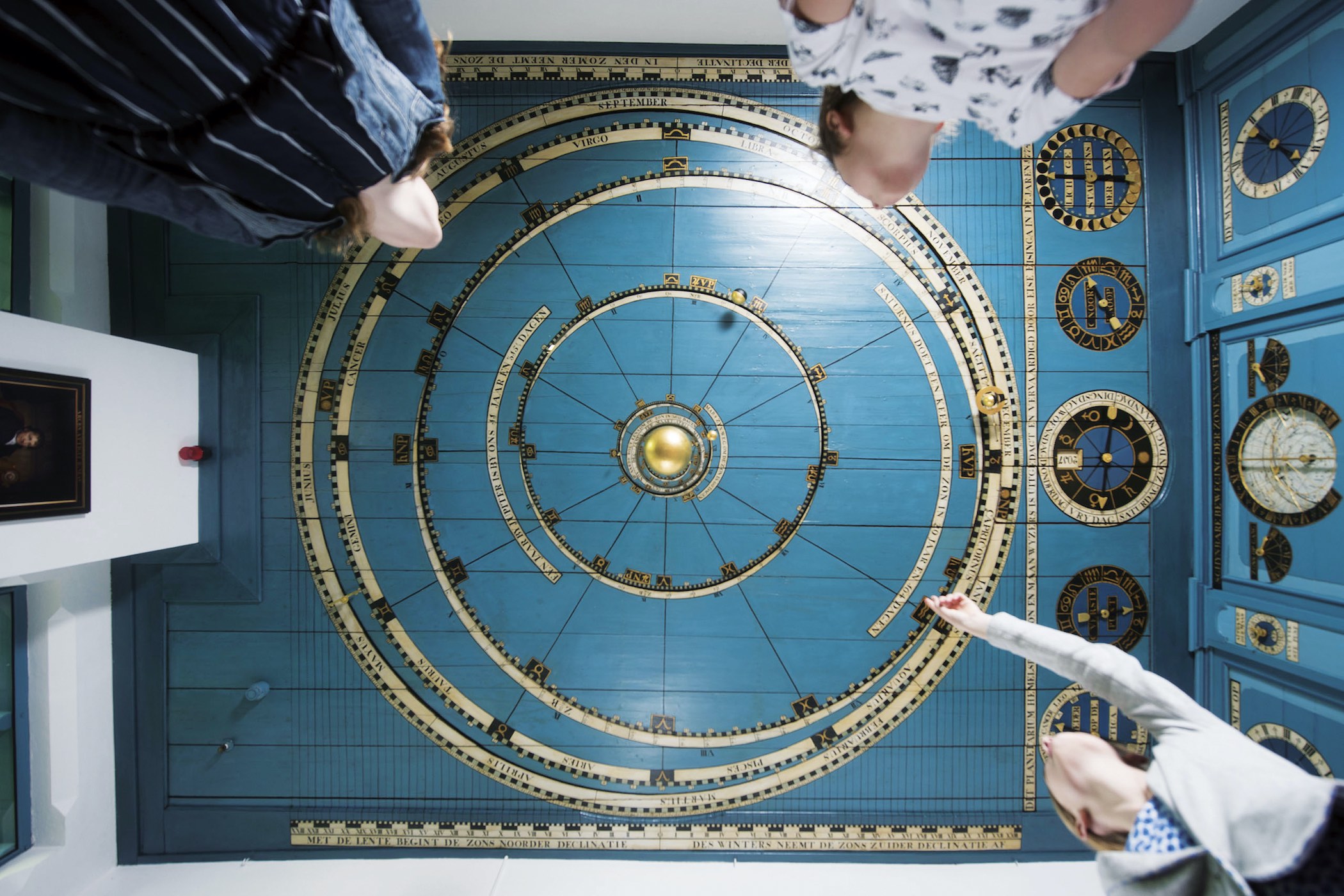
As a Dutch horologist and passionate star gazer, Christiaan van der Klaauw’s creations pay homage to a legion of acclaimed Dutch astronomers who have helped expand our knowledge of the skies since the 17th century – Christiaan Huygens, the man who discovered the rings and moon of Saturn, and who also invented the pendulum movement for clocks, and Eise Eisinga who, in 1781, built an (orrery) planetarium in his living room, which was later bought for the Dutch state in 1818 and is today the oldest functioning planetarium in the world.
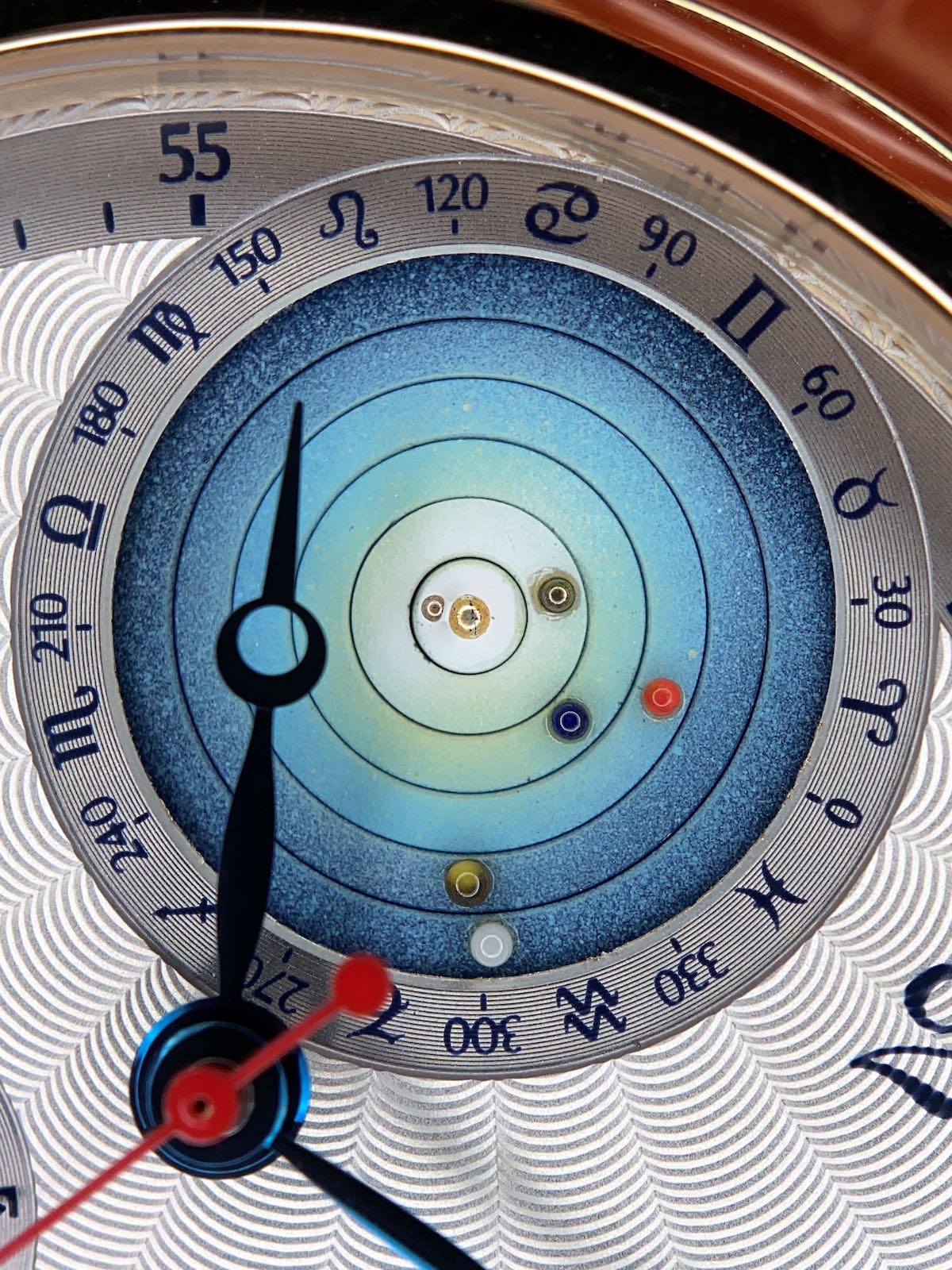
But what is a planetarium…? It is a device that tries to illustrate accurately the motion of the solar system and its planets revolving around the sun. Most planetariums are theatres built primarily for presenting educational and entertaining shows about astronomy or training in celestial navigation. What Christiaan van der Klaauw has done since the mid-1990s is to transpose this usually oversized concept into a marvel of mechanical miniaturisation, up to the point of conceiving the world’s smallest mechanical planetarium, a watch that incorporated the motion of 6 planets around the sun – Mercury, Venus, Earth, Mars, Jupiter and Saturn. But even though this watch (and the versions done for Van Cleef) were nothing short of exceptional, it was missing the end of the spectrum – namely Uranus and Neptune.
This Grand Planetarium Eccentric is the work of three generations of CVDK. The concept and complication are rooted in the ‘CVDK Kepler’s Planetarium Clock’ that Christiaan developed in 1995 and further developed with this version. Daniël Reintjes & Maria Reintjes (previous owners) have created the design for this beautiful new CVDK watch, which incorporates many details from their 15 years of creative development. Finally, the new owner of the brand, Pim Koeslag, meticulously transformed the original compass and pencil drawings into a fully developed 3D CAD design using his technical expertise and experience.
The new Grand Planetarium Eccentric
There are various reasons why the last two planets – Uranus and Neptune – might not have been displayed yet. First, space is always an issue in a wristwatch. Second, the orbits of Uranus and Neptune are slow… Like, extremely slow (several decades to well over a century). And this requires highly complex calculations and reduction gears to achieve such a slow motion. But Christiaan van der Klaauw didn’t want that to remain unachieved and he went back on the drawing board (literally), making all calculations for the 8-planet planetarium and gearings by hand. And the result comes now, in the name of the Christiaan van der Klaauw Grand Planetarium Eccentric, which is the world’s only mechanical Planetarium watch that displays all 8 planets.
Displaying all 8 planets in a wrist-sized planetarium must be seen as a true achievement
Master watchmaker Christiaan van der Klaauw, with the technical help of Pim Koeslag (who transposed the calculations and pencil drawings into a fully developed 3D CAD design) has finally managed to have the entire solar system displayed in one of his wrist-worn planetarium watches. As such, the Grand Planetarium Eccentric, a true marvel of haute horlogerie, showcases the orbits of Mercury, Venus, Earth, Mars, Jupiter, Saturn, Uranus, and Neptune around the Sun in real time. The Sun is positioned exactly in the middle of the Eccentric Planetarium, on top of the axle of the hands – well yes, this is a watch after all and it also displays the time.
The Grand Planetarium Eccentric mimics the orbits of Mercury (87.97 days), Venus (224.70 days), Earth (365.24 days), Mars (686.98 days), Jupiter (11.86 years), Saturn (29.46 years) – all were already integrated into previous CVDK Planetarium wristwatches – and now also Uranus (84.02 years) and Neptune (164.80 years). But that’s not all, as the discs of this new Grand Planetarium Eccentric are not traditionally circular. The planets instead follow eccentric paths, closely mirroring reality as accurately as possible.
This in-house calculated (by hand, by Mister van der Klaauw himself), developed and manufactured planetarium module boasts a staggering number of gears, with a total of 3,338 teeth – making it the most complex CVDK watch ever created, and a perfect canvas to celebrate the man’s 50-year career. In addition, the periphery of the dial incorporates calendar indications and zodiac signs, which can be read in conjunction with the motion of Planet Earth.
This spectacular motion is powered by a new movement, a manufacture calibre in the making since 2017 and conceived together with movement maker UhrTeil AG (founded by Andreas Strehler). This fine movement, equipped with a free-sprung hairspring, a variable-inertia balance wheel, and boasting 60 hours of power reserve is also notably original in its decoration, with star-shaped bridges, frosted star decoration with rhodium-plating, and a skeletonized rose gold-plated brass rotor formed in the shape of the CVDK logo. The overall movement is finely decorated and might be a bit too exuberant for some, but at least entirely consistent with the concept of astronomical watches by the brand.
Considering the space required by such a complex display, the Christiaan van der Klaauw Grand Planetarium Eccentric is a fairly large watch housed in a 44mm case, with an ultra-thin bezel and available in 950 platinum or 18k rose gold. At 14.3mm, it’s also reasonably thin considering the sheer complexity of this watch. Either gold or platinum, it’s paired with a blue leather strap with a folding buckle. The dial, as you’d expect from such an astronomical watch, is made using Aventurine glass (goldfluss) to recreate the starry sky in which the planets orbit – I wouldn’t see this watch without such a backdrop anyway. Time is indicated by thin open-tip eccentric moon hands (hours and minutes) and the seconds are displayed thanks to a rotating sun logo in the centre. The domed sapphire crystal has engraved Roman numerals on the inner face to mark the hours.
A true masterpiece and one of the most impressive astronomical watches ever created, the Christiaan van der Klaauw Grand Planetarium Eccentric marks the 50th anniversary of the brand and is released in the permanent collection, yet with low production numbers. The rose gold model will be priced at EUR 208,000 and the platinum at EUR 227,000. For more details, please visit www.klaauw.com.

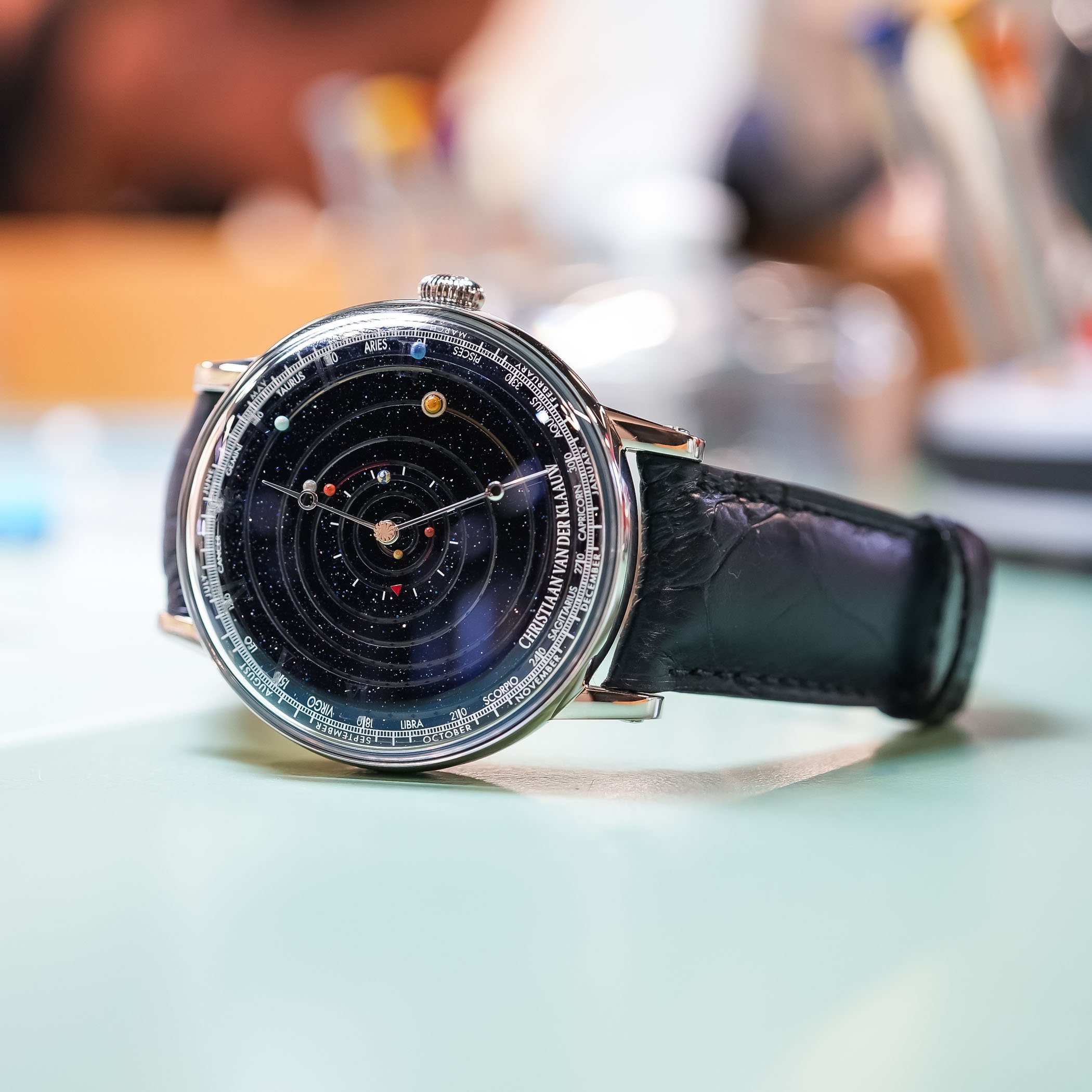
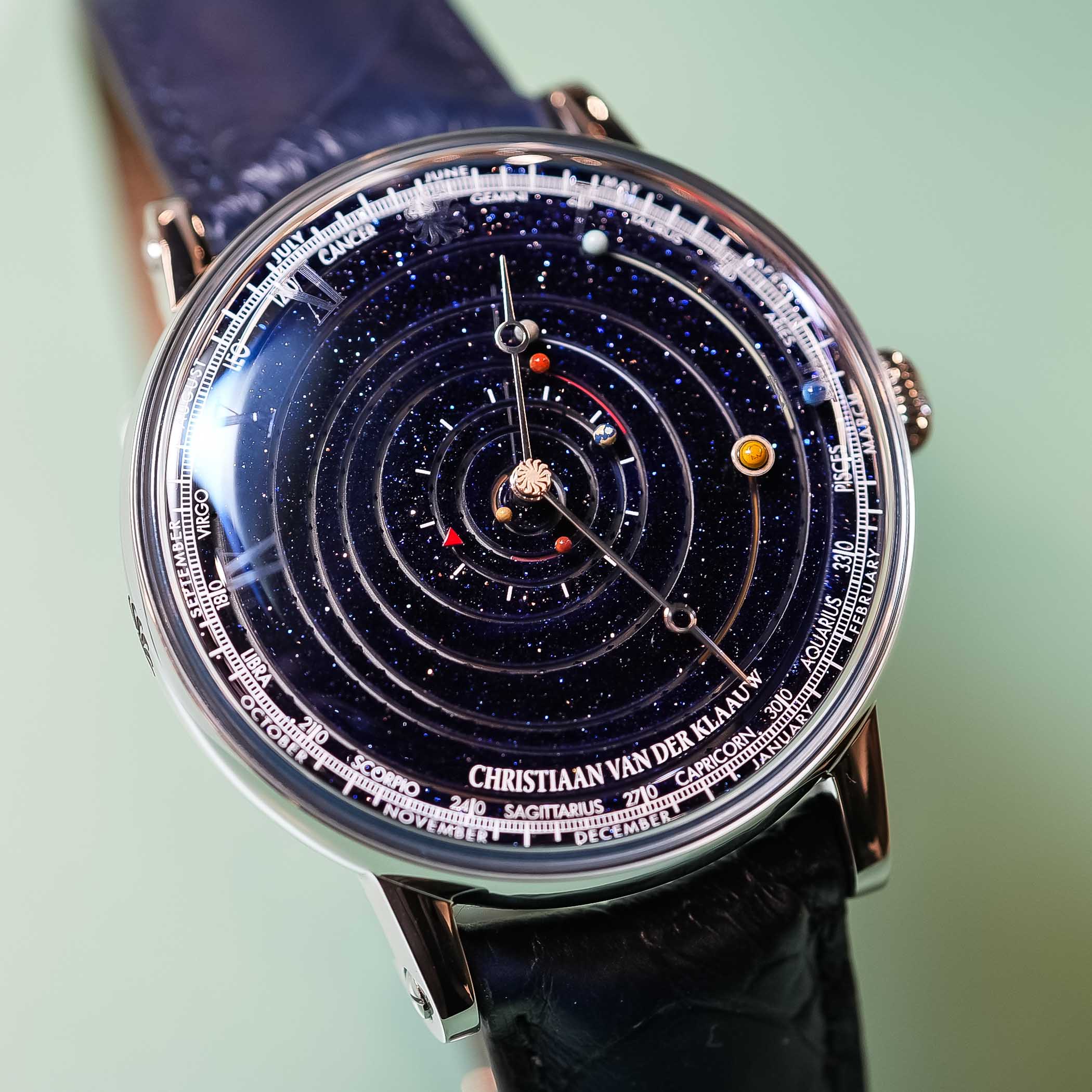
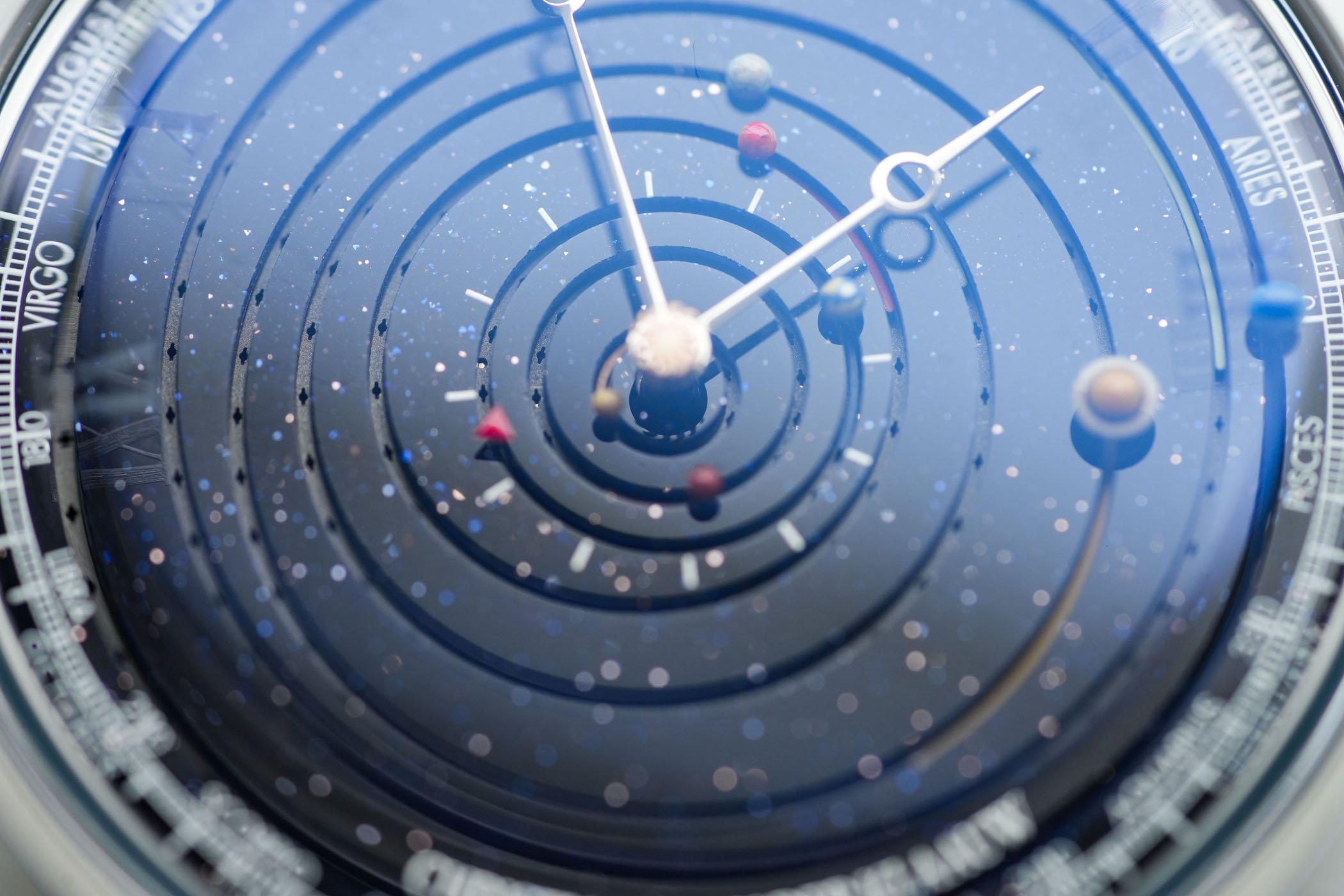
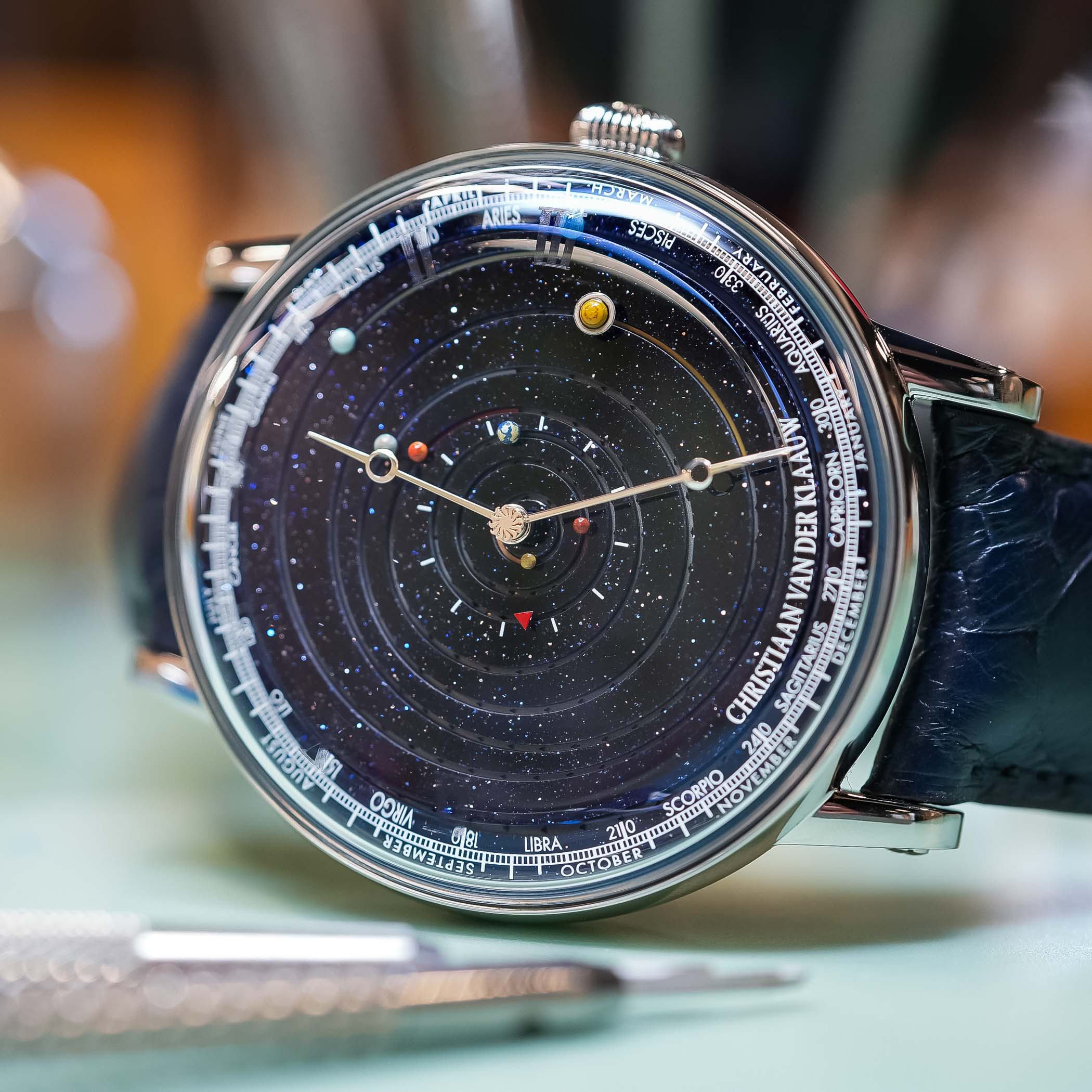
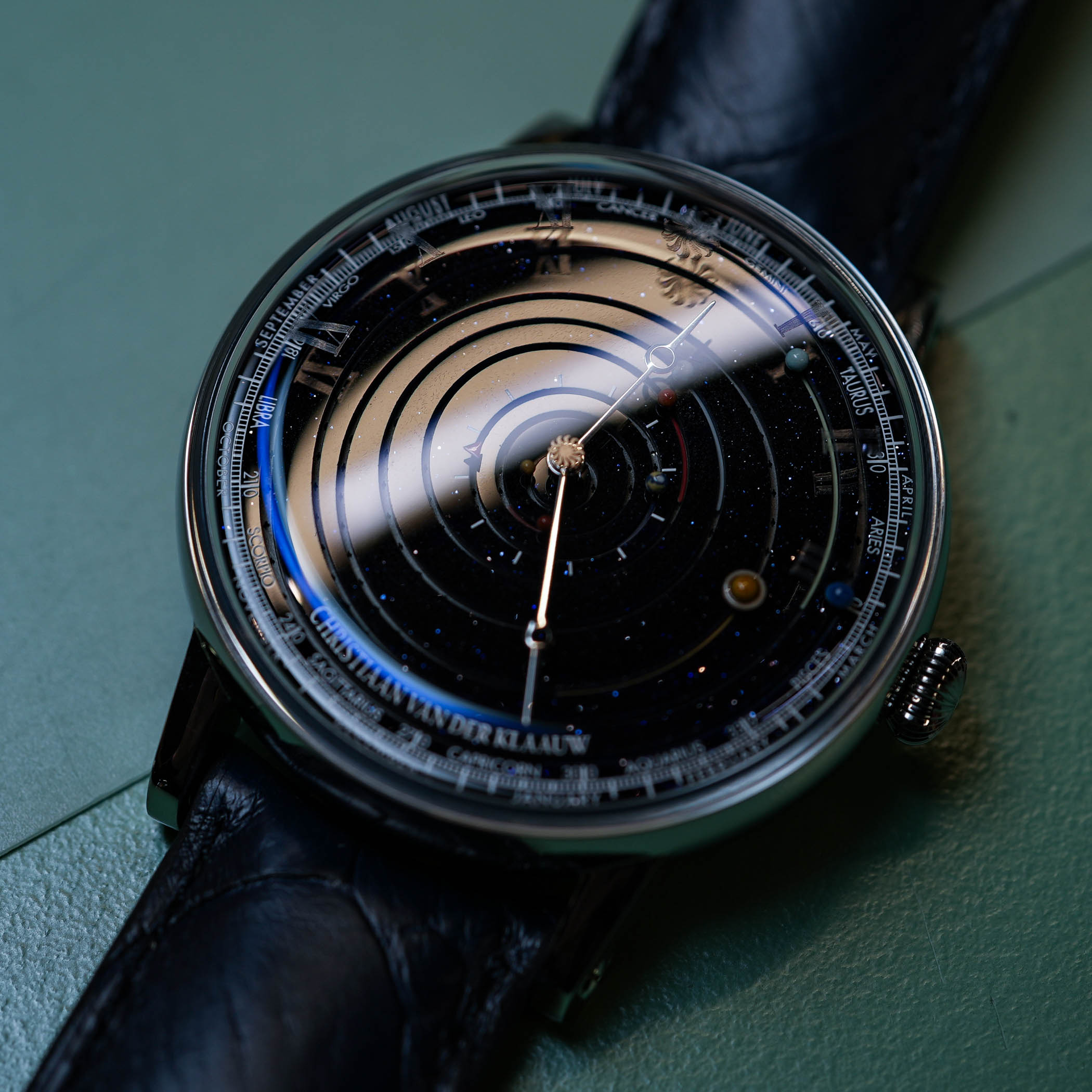
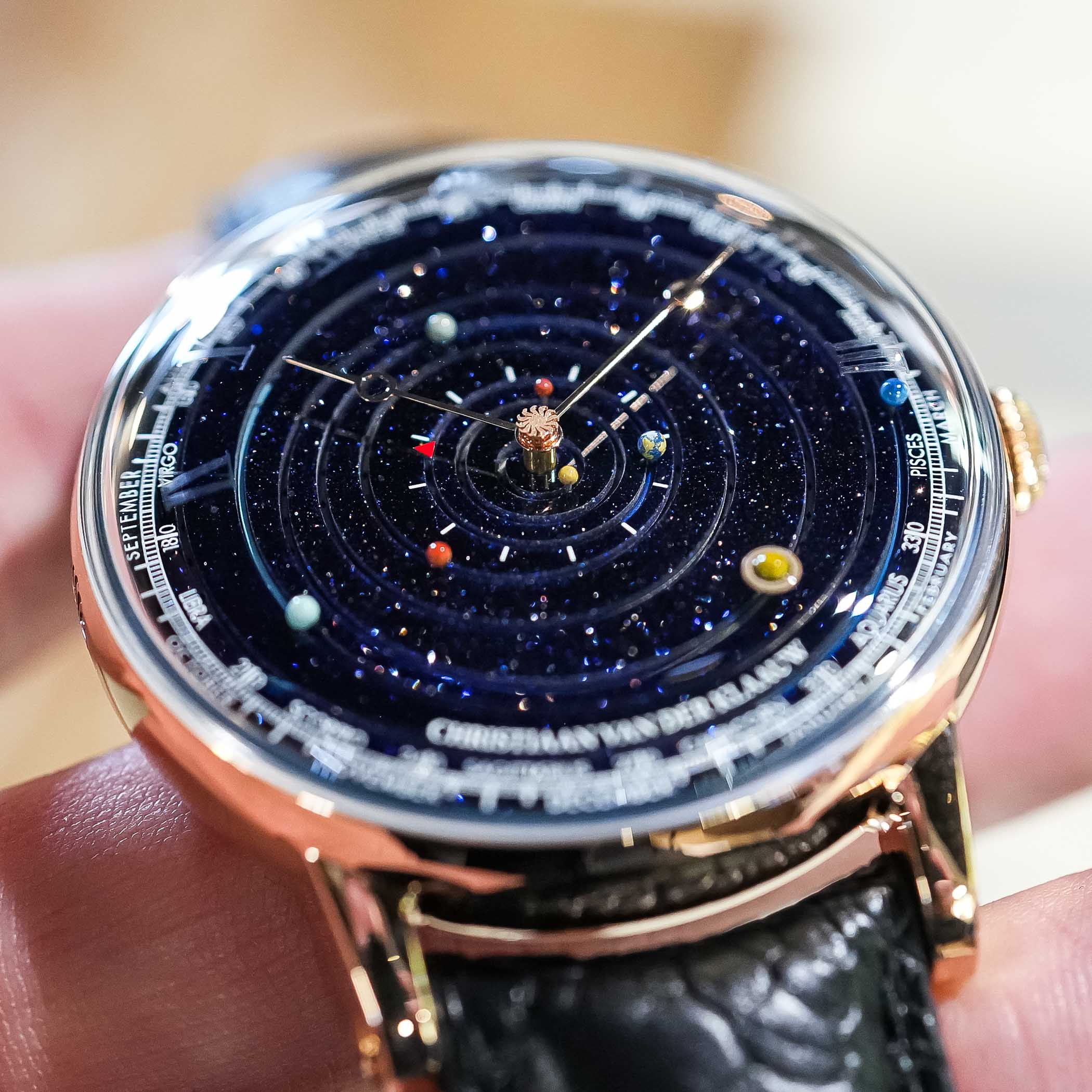
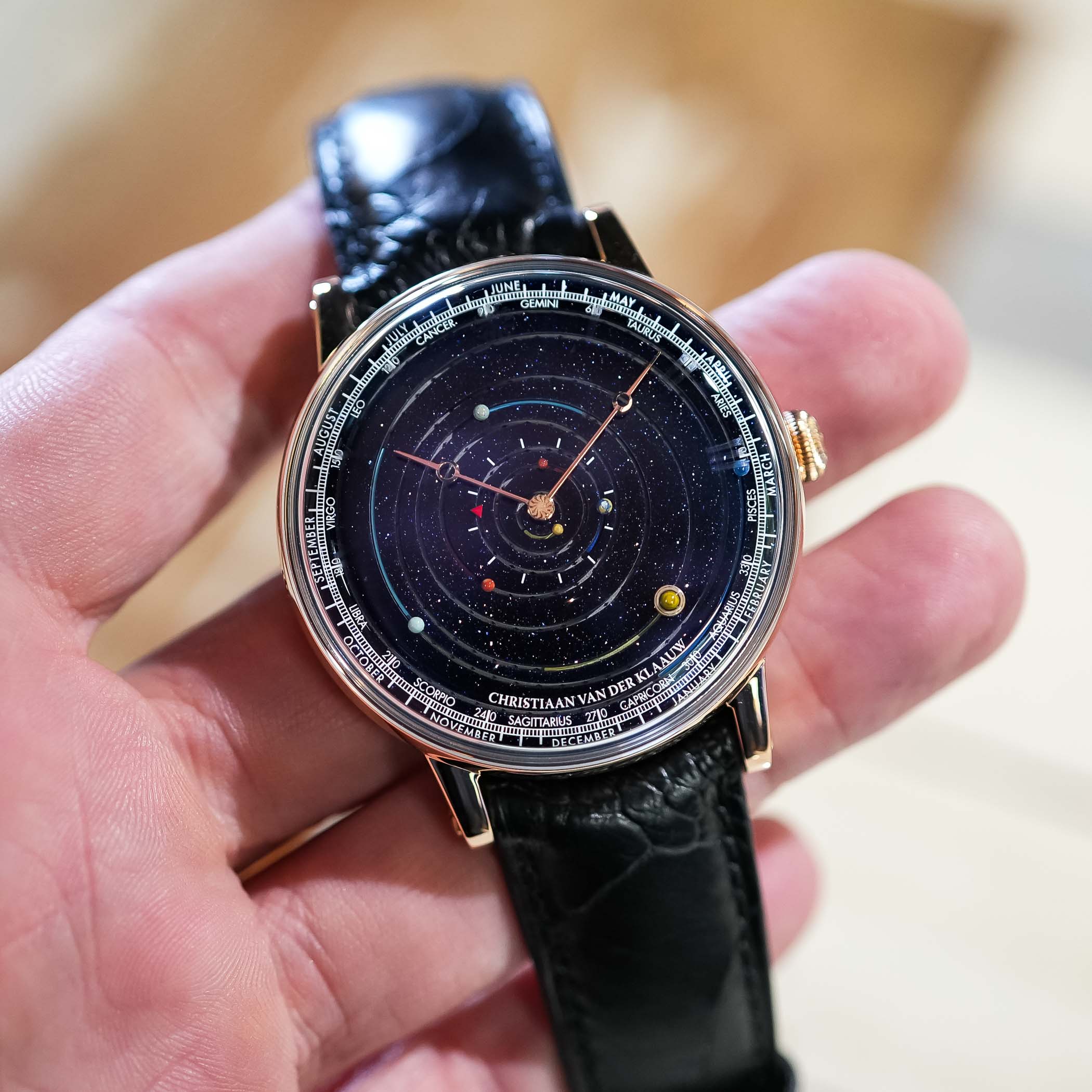

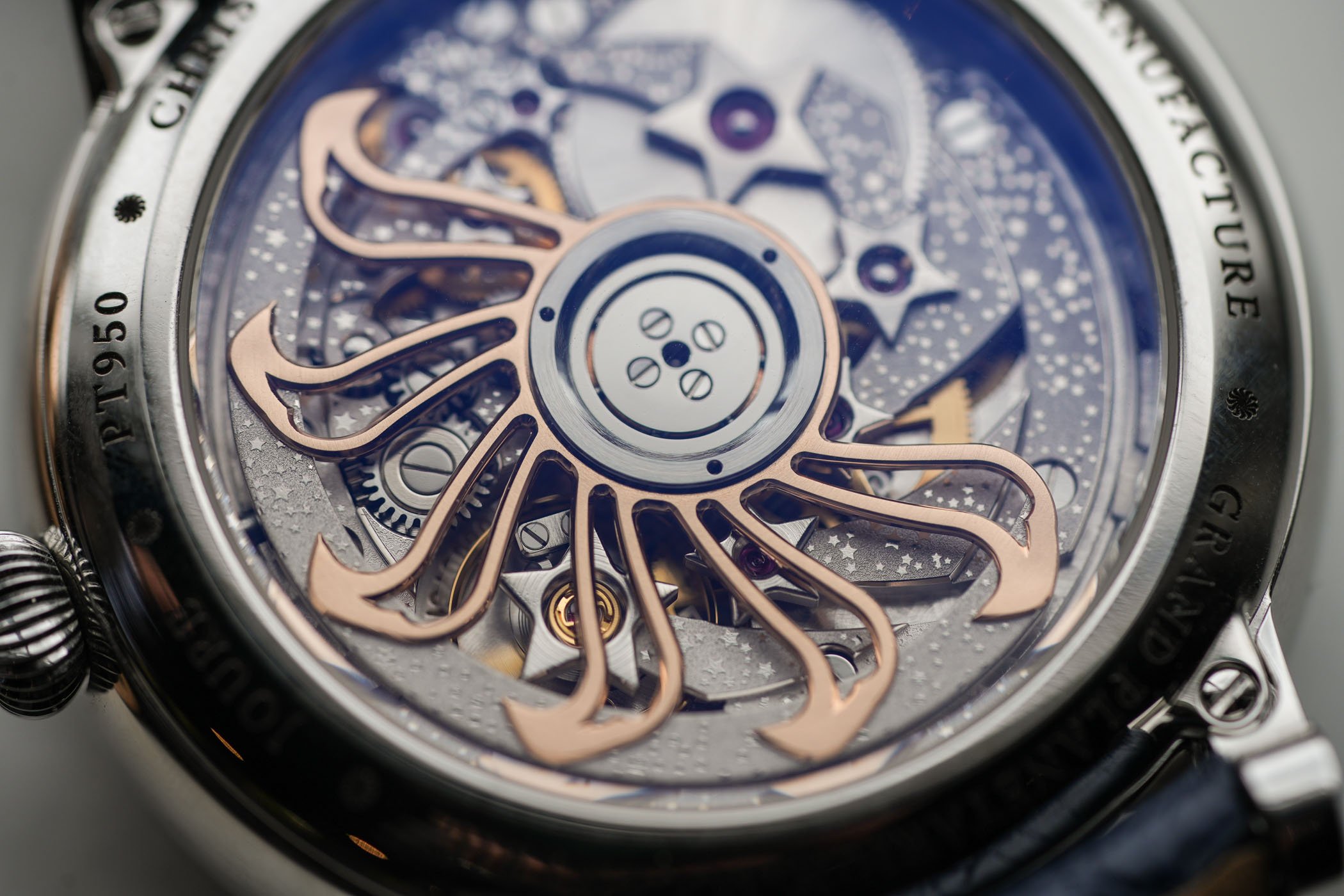
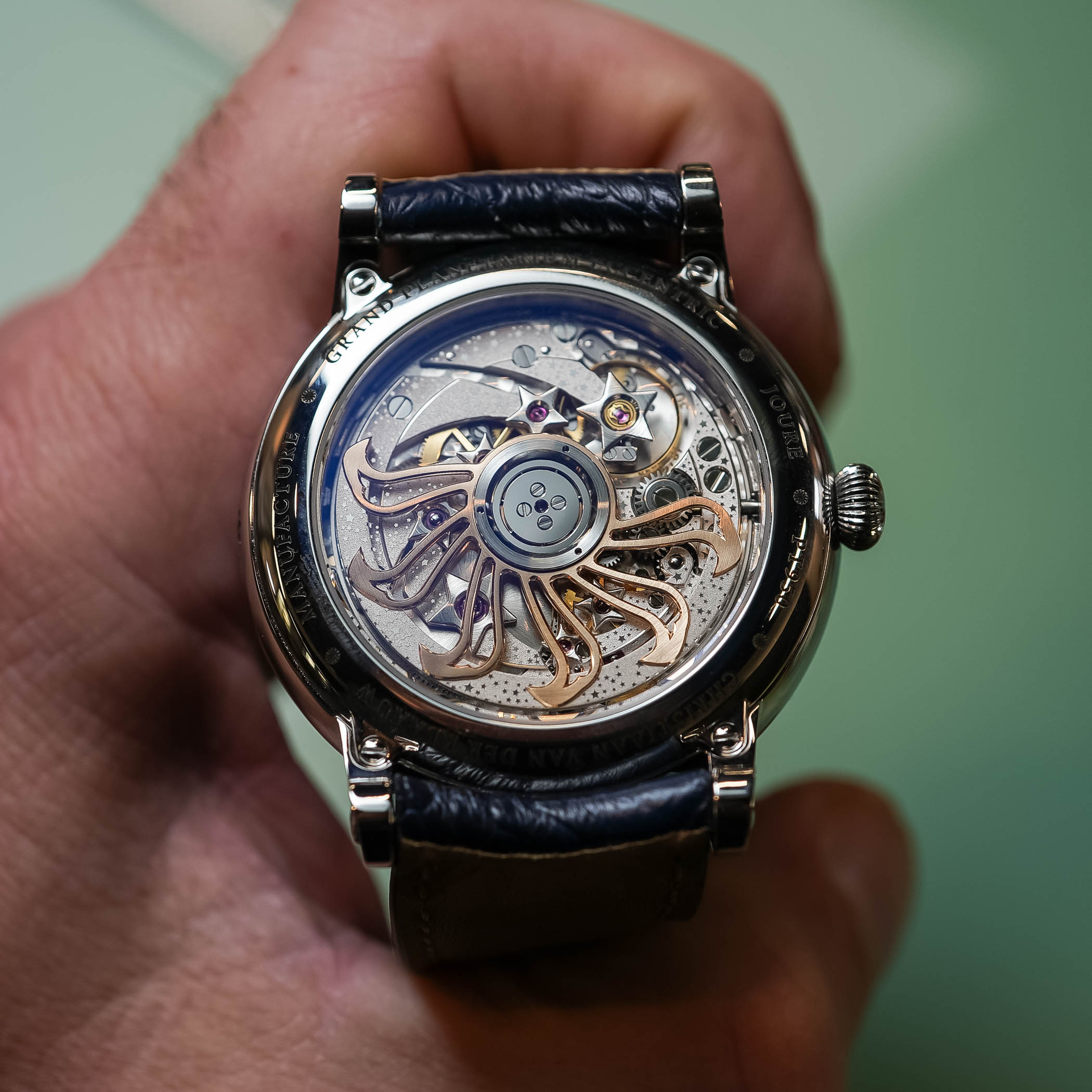
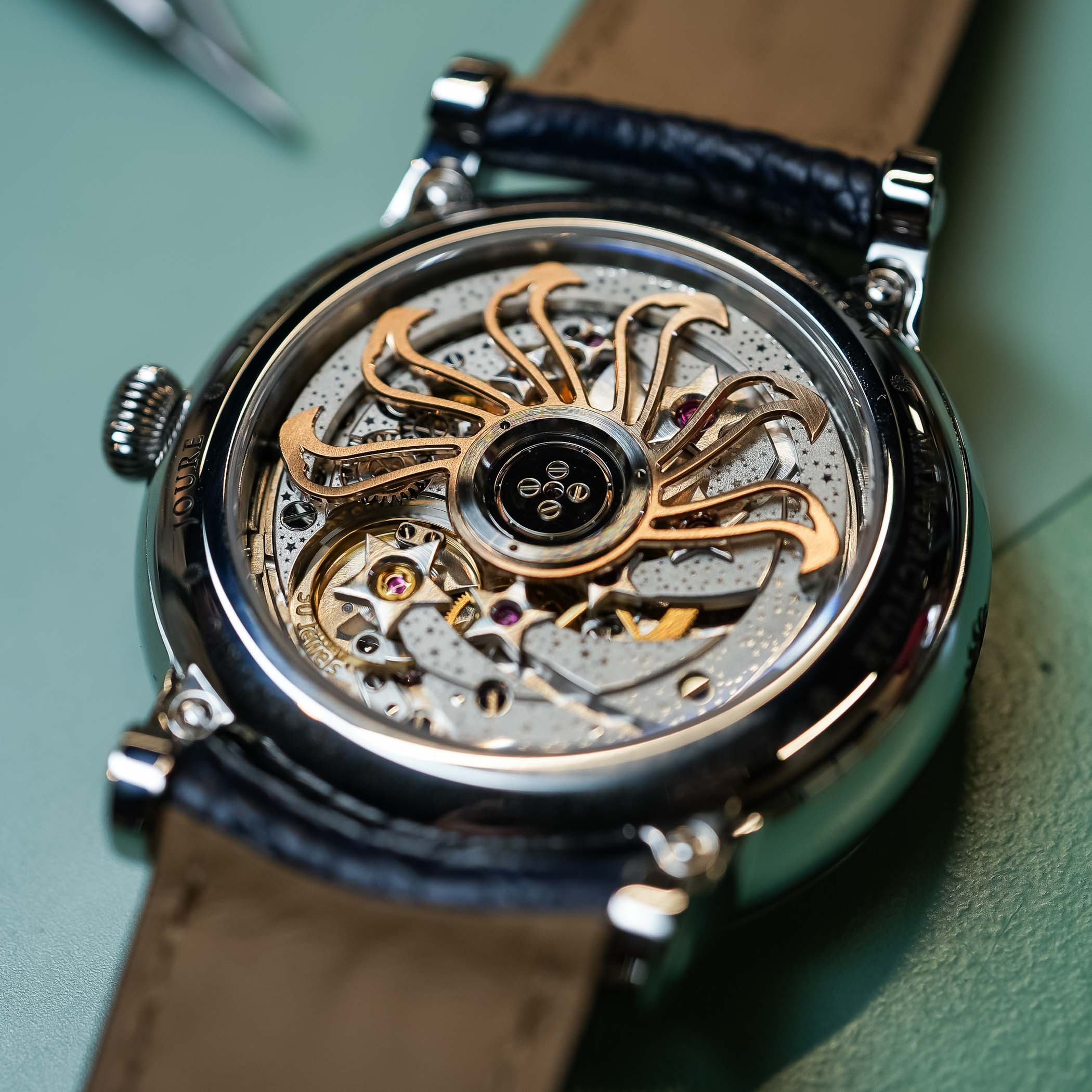
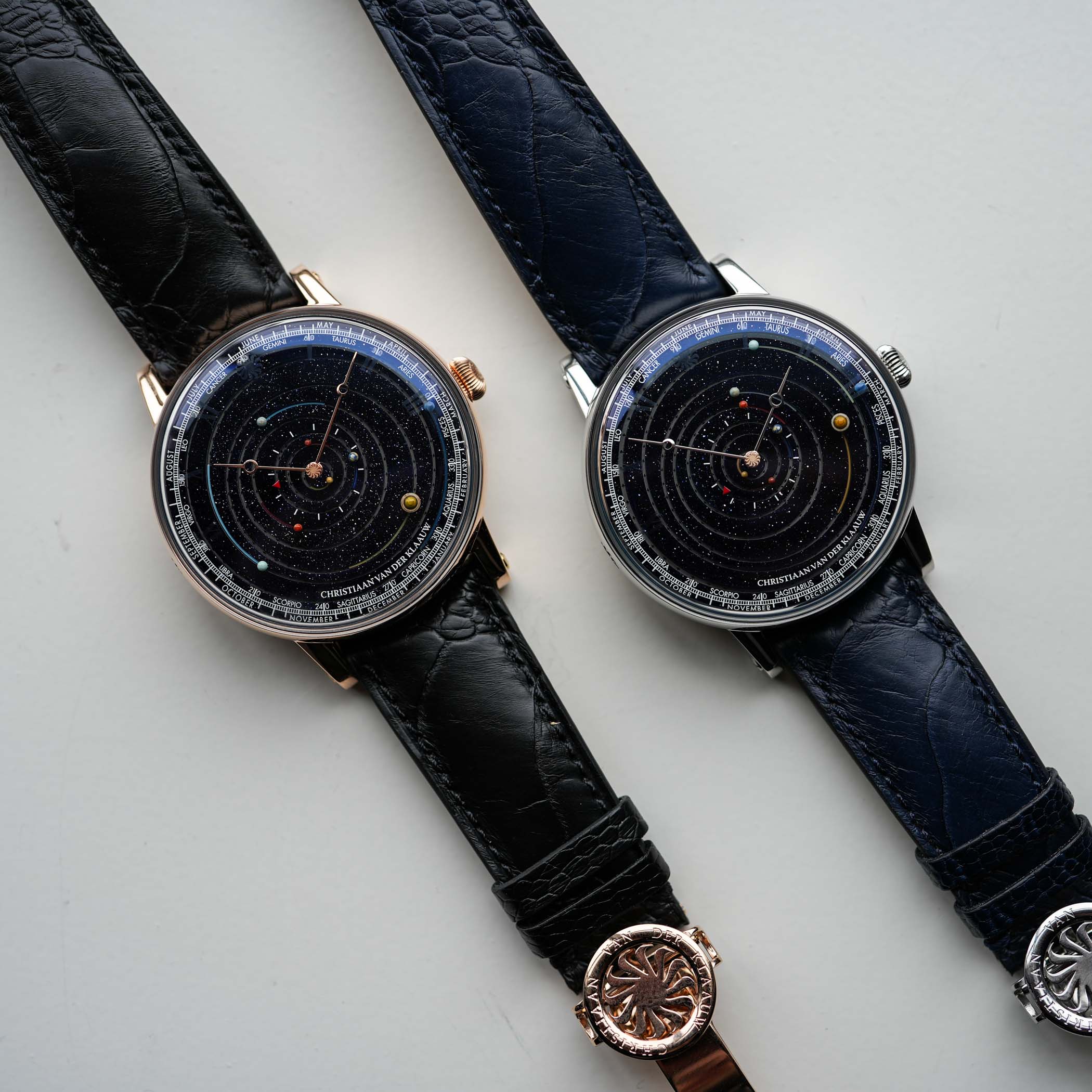



3 responses
164 years to watch Neptune do a full rotation on the dial – what could be more eccentric than that?! I love it!
I believe it’s not the only one
Space one launched one as well
@Chapman LI – Space One is not a planeterium but a tellurium (see here –> https://monochrome-watches.com/spaceone-is-back-with-an-accessible-wrist-sized-tellurium-introducing-specs-price/) which is a “an intricate mechanism and a tool to illustrate the dynamic interplay between day, night, and the changing seasons, all influenced by our planet’s rotation on its axis and its orbit around the Sun” – it is thus a fairly different complication and display than a planetarium.